While not the most exciting coloration found in nature, brown rocks and minerals have an astounding variety. These range from perennial favorites like picture jasper to obscure minerals like the manganese ore pyrolusite. It’s always worth a look, even if just to take another look at how diverse the minerals that lie under the earth’s surface can be.
So, let’s take a closer look with our list of brown rocks and minerals!
1. Picture Jasper
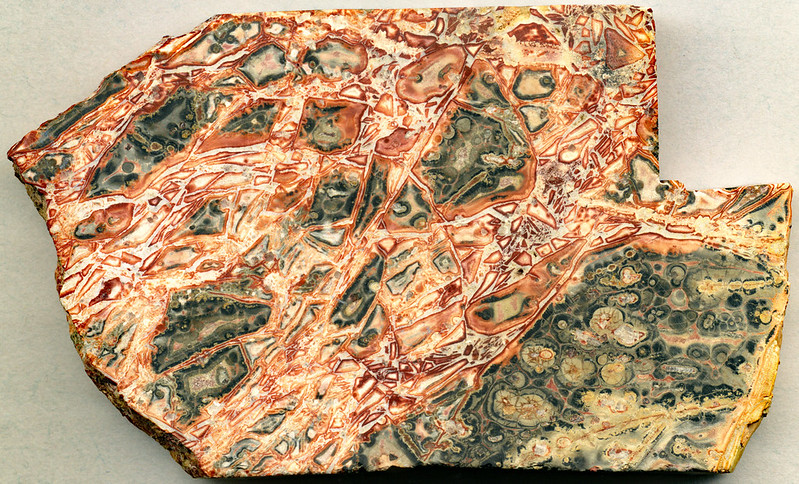
Picture jasper is often comprised of various shades of brown. These form complex patterns, many of which resemble landscapes like mountains. There are many different types of this jasper, found in many locales. Each of them is unique, and slabbing them is found to be a joy by many lapidaries.
Picture jasper, like all jaspers, is a cryptocrystalline form of silica. You may recognize silica as the primary component of quartz and agate as well. Jasper is more impure than either of these, giving it an opaque appearance. While primarily found in different shades of brown, picture jasper can also display a blue coloration which gives it an appearance that even more closely resembles a landscape painting.
Perhaps the most famous of the various picture jaspers is Owyhee Picture Jasper. Owyhee often has a blue or grey “sky” and when the cabochons are properly cut they’re a favorite for jewelry. Even the slabs themselves are often excellent display pieces when polished. This material comes from the Idaho-Oregon border, an area just south of Homedale, Idaho.
2. Petrified Wood
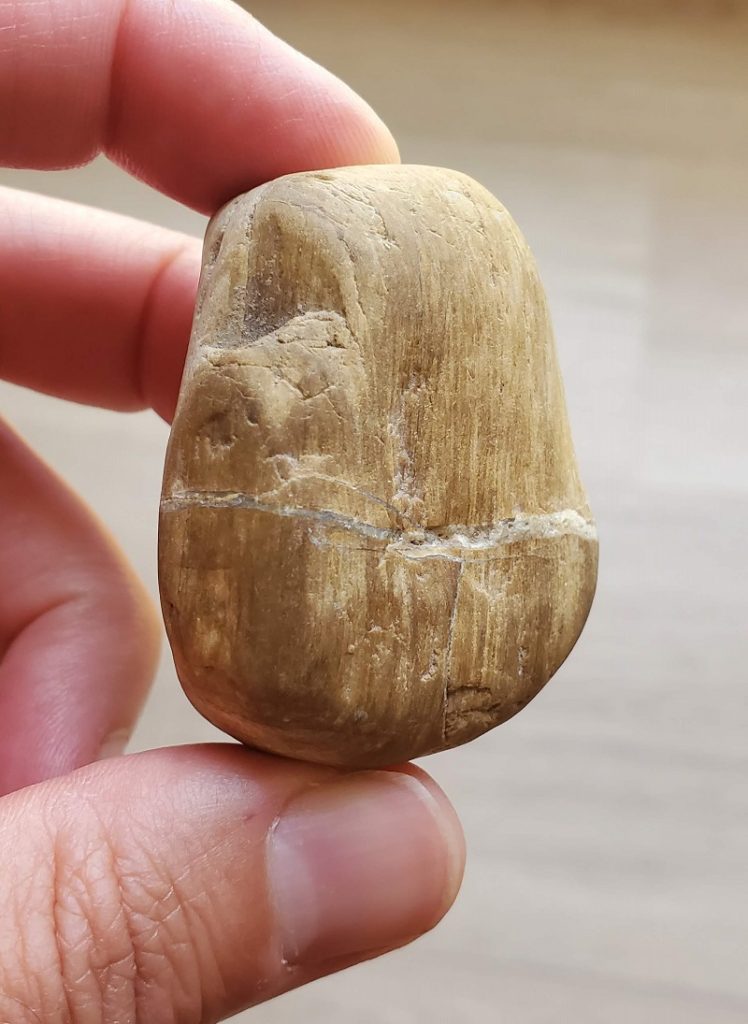
While some petrified wood is known for dramatic coloration, much of it is simply as brown as the wood it forms from. Limb casts can be found which look almost identical to a regular piece of wood, but instead of being comprised of cellulose and water, they’re comprised of chalcedony or other minerals. Other materials may include native copper, pyrite, or even calcite depending on the region from which it hails.
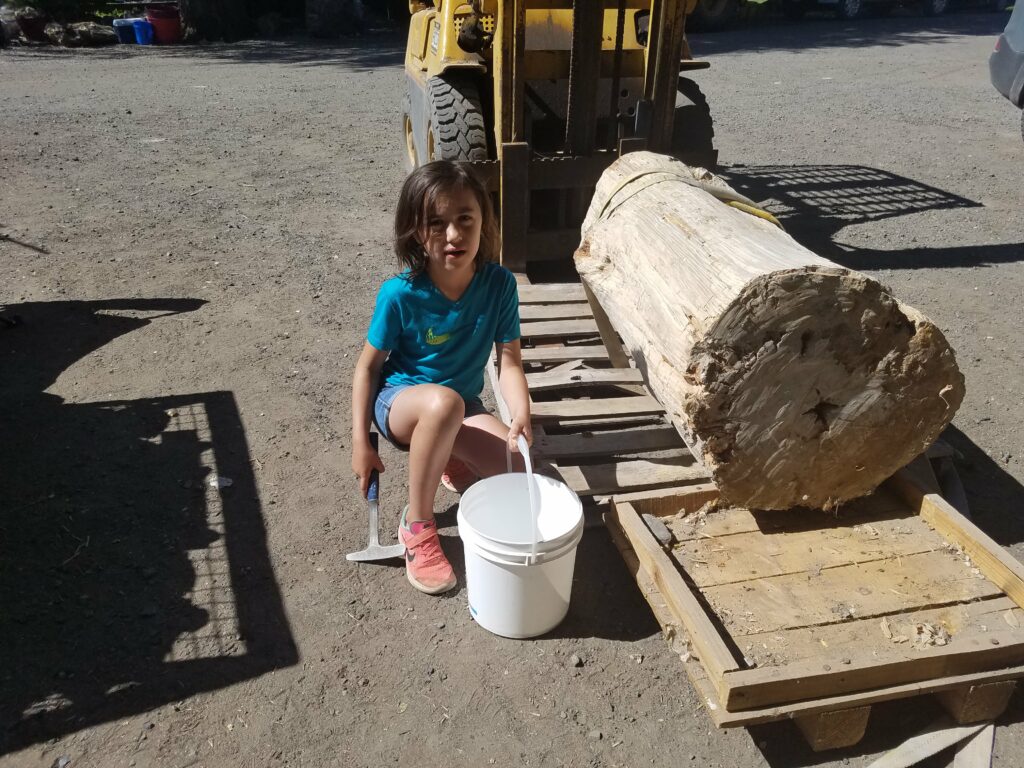
The most sought-after petrified wood is found as a solid material with a distinctive ring to it. The brown coloration actually doesn’t come from the fact that it used to be wood, but instead is comprised of various iron oxides which are trapped in the cryptocrystalline lattice of the material.
Petrified wood can be found across the United States. All that’s really needed is time, high pressure, and an environment lacking in oxygen. As time goes on, the wood rots away slowly as heated, mineral-rich waters fill in the hollows left behind. Small chips of it are common finds, but Oregon and Arizona both produce incredible limb casts.
3. Siderite
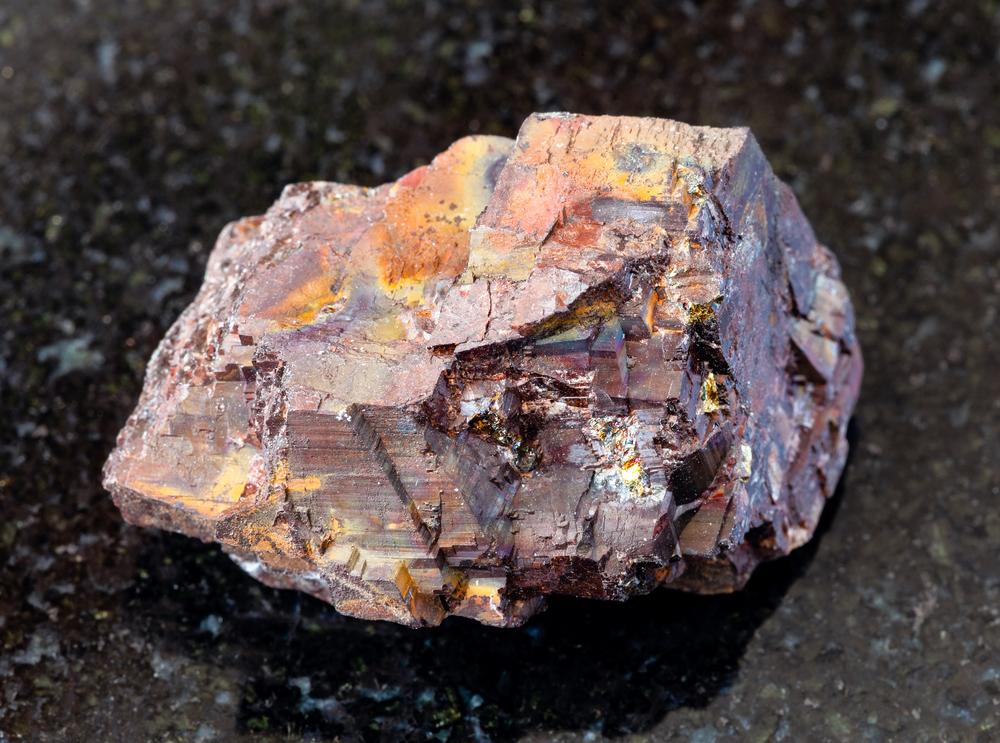
Siderite is a form of iron carbonate and one of the most common iron ores found on Earth. The mineral itself takes the form of a granular, brown rock in most cases but crystals can also be found. These crystals are generally tabular and curved. There’s also a botryoidal form that occurs on occasion, made up of small, interlocking spheres of the material.
Siderite crystals of high quality are quite rare but make for stunning specimens. Some of the best are even cut as gemstones, but these are primarily only of interest to gem collectors since the mineral is quite soft at 3.75-4.25 on the Moh’s scale. The majority of the mineral is simply harvested for its iron content, however.
Siderite is associated with hydrothermal activity, where it’s found in close association with minerals like galena and barite. It can also be found in thick seams in sedimentary stones such as sandstone depending on the locale. Not all locations bear good examples of crystallization. Peru seems to have the most gem-quality material, but chances are there’s somewhere nearby you can find some sort of sample if you think you’d like one for your collection.
4. Smoky Quartz
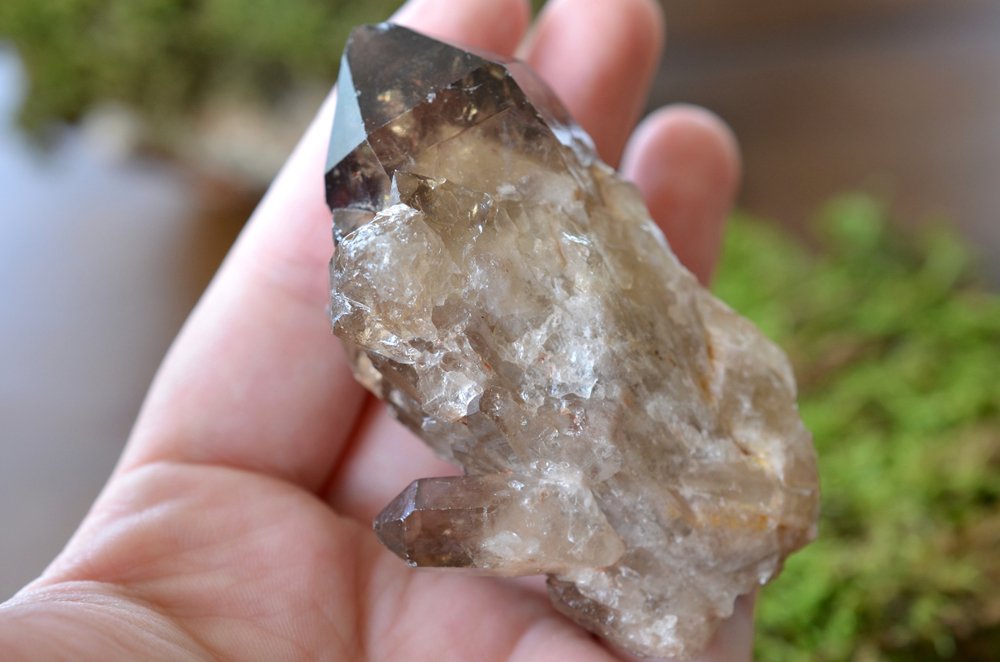
Smoky quartz is a colored variety of quartz. The color ranges from tan to a deep brown that can be almost black. Like all quartz, it’s found as six-sided crystals, often in clusters that form as pockets in the bedrock. It’s long been a favorite of collectors since few translucent stones form with the same coloration.
The coloration of smoky quartz comes from a combination of aluminum impurities and natural radiation as it forms underground. This gives the crystal its tell-tale coloration, and its a relatively common find in areas where crystalline quartz can be found. It was actually used to make lenses of sunglasses in China as far back as the 12th century.

There is also a black variation of smoky quartz, which is generally known as morion. Like all quartz, it can form into complex crystals, containing phantoms or other inclusions. The crystals are often put into jewelry or cut into faceted stones, like all quartz varieties. It’s found in most states where quartz is found but Nevada and Colorado have a reputation for producing the best specimens in the US.
5. Pyrolusite
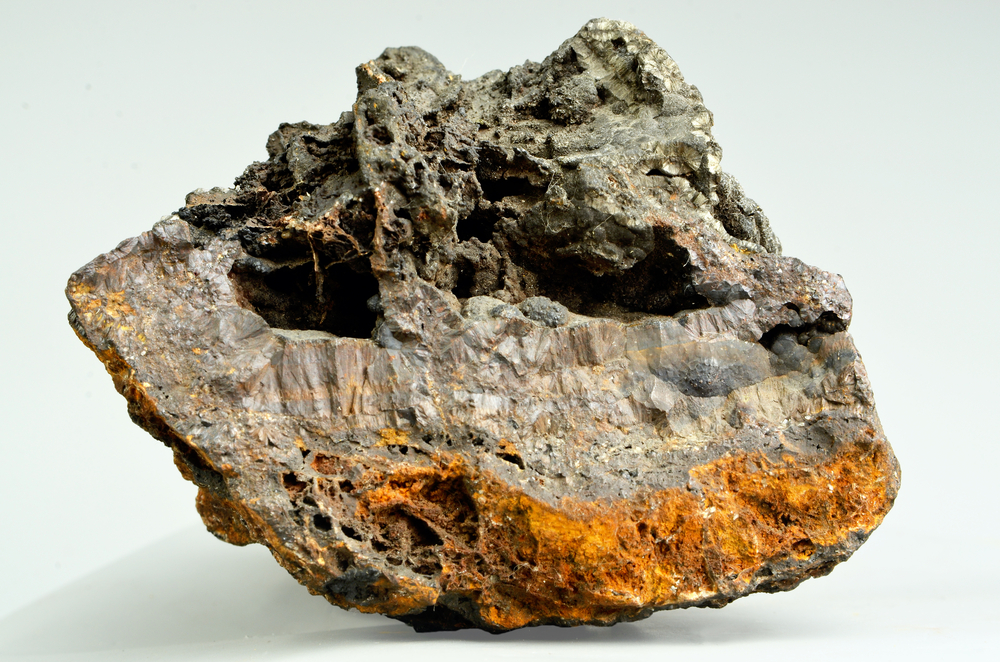
Pyrolusite is an important manganese ore, in the form of manganese dioxide. The stone has a black-to-brown appearance, often tending towards the black side of things. It’s most often processed for its manganese content, but despite the black color it actually does have a brown secret.
Pyrolusite is actually the basis for the pigment known as umber when powdered. Umber is a brown dye, used since ancient times. This dye has a history stretching back beyond recorded history, to at least the Middle Paleolithic period. It’s often found to be the pigment used in ancient cave paintings, and blocks of it often appear around ancient sites.
In addition to its use as a pigment, pyrolusite appears to have been used for creating fires when combined with a fungus used as a tinder. The long history of use stretches back to the Neanderthals, and it’s a common find around excavated settlements used by the species. It’s most often found as fibrous masses or crumbly rocks, solid crystals are quite rare. That said, some great crystals come from Pinal County in Arizona and in a few other places around the country.
6. Mahogany Obsidian
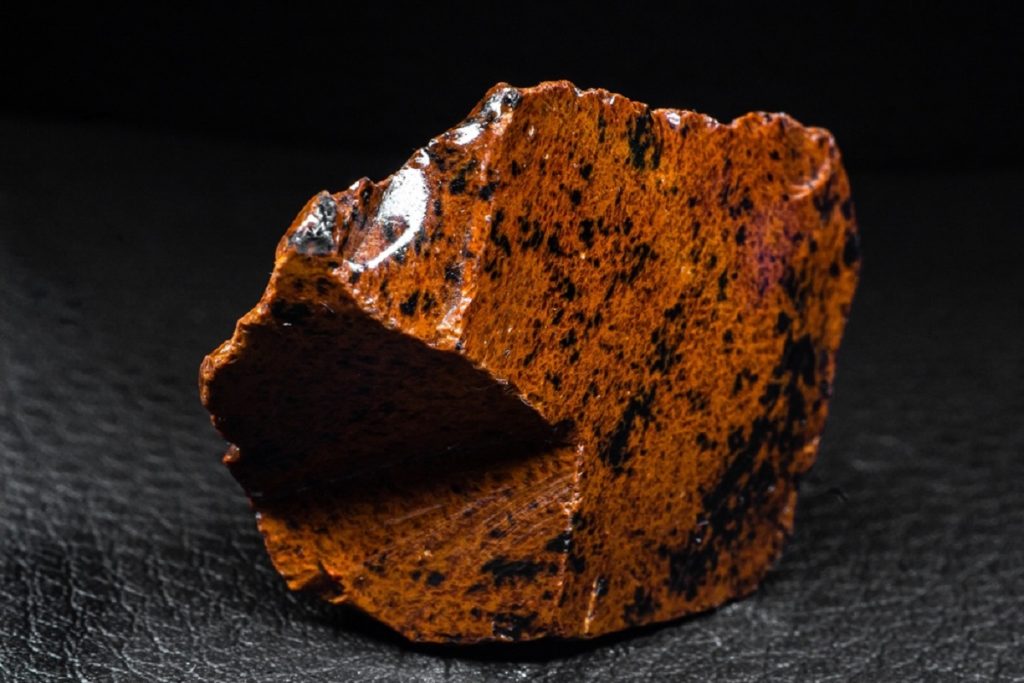
Mahogany obsidian is a variety of volcanic glass which is black with reddish-brown patterns. It’s one of the more common varieties of colored obsidian, and it’s often used by both flintknappers and lapidaries in their projects. It’s especially attractive since it often occurs in large nodules which make a wide variety of different projects easy to attain without having to break the bank.
The coloration of mahogany obsidian comes from the inclusion of hematite in the volcanic glass as it cools. Like all obsidian, it’s actually not considered a mineral but instead a mineraloid. Minerals require a coherent inner structure (ie: crystallization) while obsidian is made up of amorphous silica caused by the rapid cooling of high silica lava.

Mahogany obsidian can be found in quite a few places across the world, it’s hardly a rare stone. It’s also very beautiful and works well if you’re into the lapidary arts. In the United States it’s most often found in the Pacific coastal states, Oregon, California, and Washington produce the majority of it. It’s often found alongside standard obsidian, since the ingredients for the patterns are among the most common minerals on the planet.
7. Orthoclase
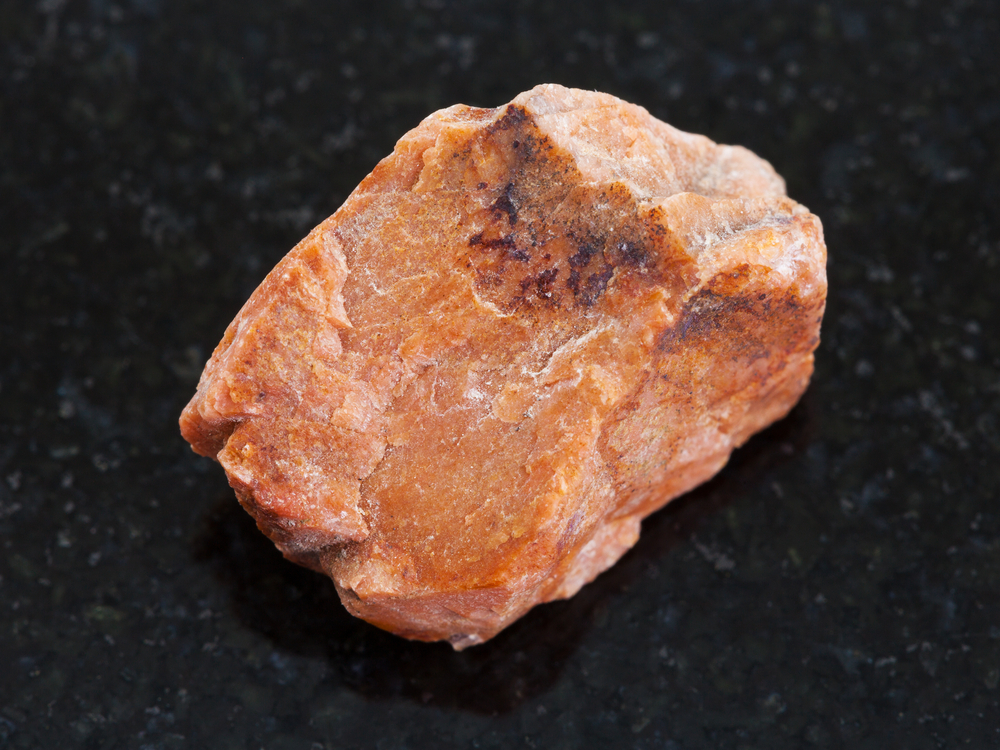
Orthoclase is a potassium feldspar mineral, most commonly seen as a light brown or orange-brown mass. It’s a relatively common mineral on our planet, but some of the varieties can be rather rare. Orthoclase feldspar, for instance, forms the basis for moonstone. That’s the peach or white variety, rainbow moonstone is actually a calcium feldspar like labradorite.
Orthoclase ranges from peach to a deeper brown in most cases. The crystals can be found in aggregate with no clearly defined surfaces, known as anhedral crystals, or they can have sharply defined faces which would make the crystals euhedral. Orthoclase is also known for having cleavage planes at perfect right angles. In fact, the name of the mineral is taken from Ancient Greek for “straight fracture.”
Orthoclase is a common find in the US, with over a thousand known locations. That said, the majority of it is granular even if found in euhedral crystals although some display an impressive surface luster. Top quality speicmens can be sourced from China or Italy, for those looking. If you want to collect your own, then you’re best off looking in Southern California, Western Arizona, and Colorado, all of which contain distinct crystals of the mineral.
8. Sandstone
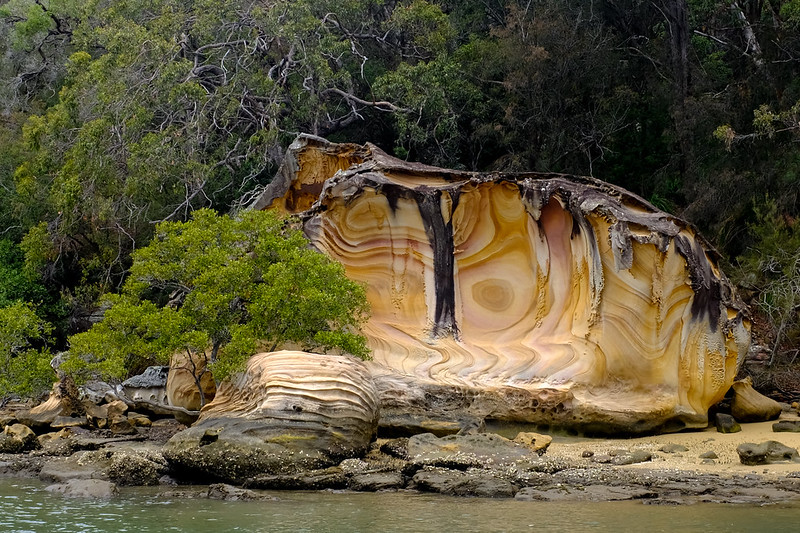
Sandstone is among the most common stones in the world. While not a distinct mineral in-and-of itself, it does account for roughly 25% of the sedimentary stone deposits across the world. Sandstone is generally light brown in color, although brilliantly colored sandstones do exist in some locations. Sandstone is defined as sand (ie: particles between .0625mm and 2mm in size) cemented together through pressure over time as it collects from erosion.
Sandstone is generally comprised of grains of quartz or feldspars, both of which are silicate minerals. These are bound together with a mineral that works as a cement, which can be anything from quartz to calcite to iron ores like hematite and limonite. This will change the color of the sandstone depending on the exact makeup.
Sandstone is rather porous, which makes it a valuable resource since it tends to absorb things like water and petroleum. It has a long history of use as both a structural and artistic material, especially with the harder varieties. While few people collect samples of the rock for it’s own sake, those who’d like to see especially dramatic formations would do well to visit Zion National Park in
9. Scoria
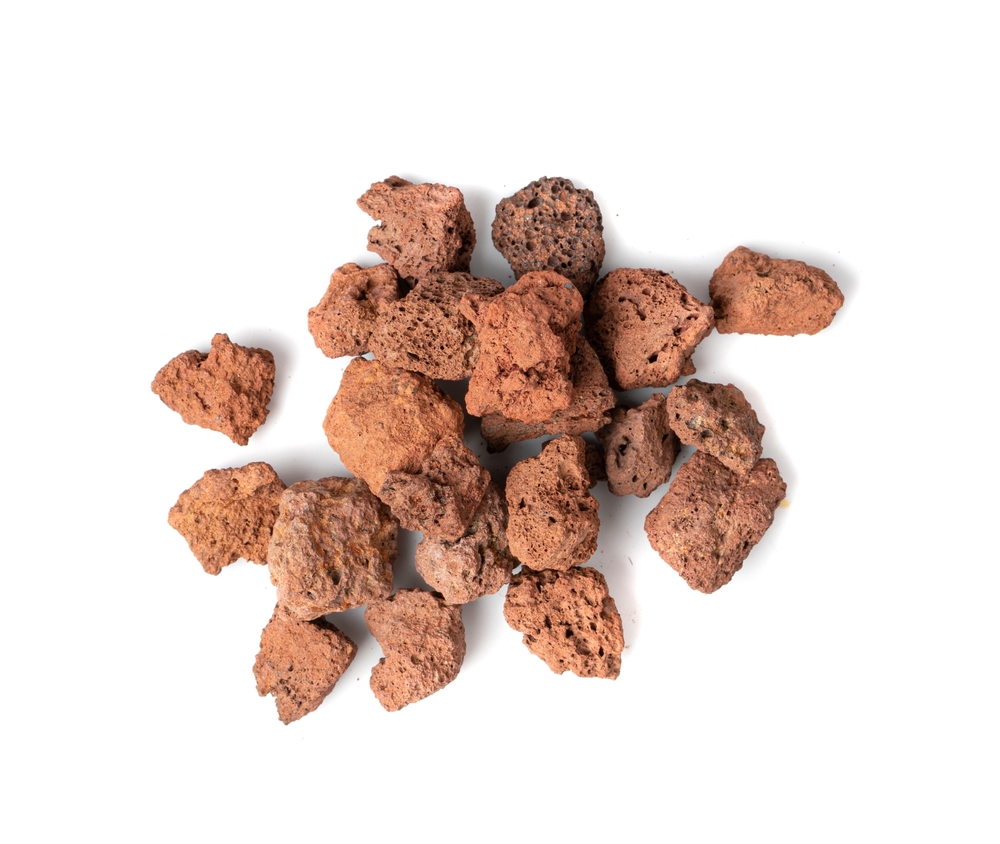
Scoria most often resembles a dark brown pumice, but it has thicker walls which make it much denser. It has a pyroclastic origin, forming from lava that’s air-cooled before it hits the ground during violent volcanic eruptions. The pores come from gasses trapped in the lava, which remain after the stone has hardened. Chances are that you’ve seen some, it’s often called “lava rock” in informal settings.
The pores, or vesicles, in the stone, are generally spherical in shape and overlap. These overlaps don’t cause deformation of the spherical shape that the gas bubbles formed. While the color varies a bit, the majority of it is a dark brown-grey color. The actual composition varies, but it’s generally composed of silicate glass and some amount of zeolite minerals.
It has a wide variety of uses. Sometimes it’s crushed and made into cinder blocks, or larger pieces may be used to help increase the ability of soil to retain water around gardens due to its porous nature. Scoria is found in all states to the West of Wyoming in varying amounts. The exact cut-off is generally considered to be the 104th meridian.
10. Bog Iron
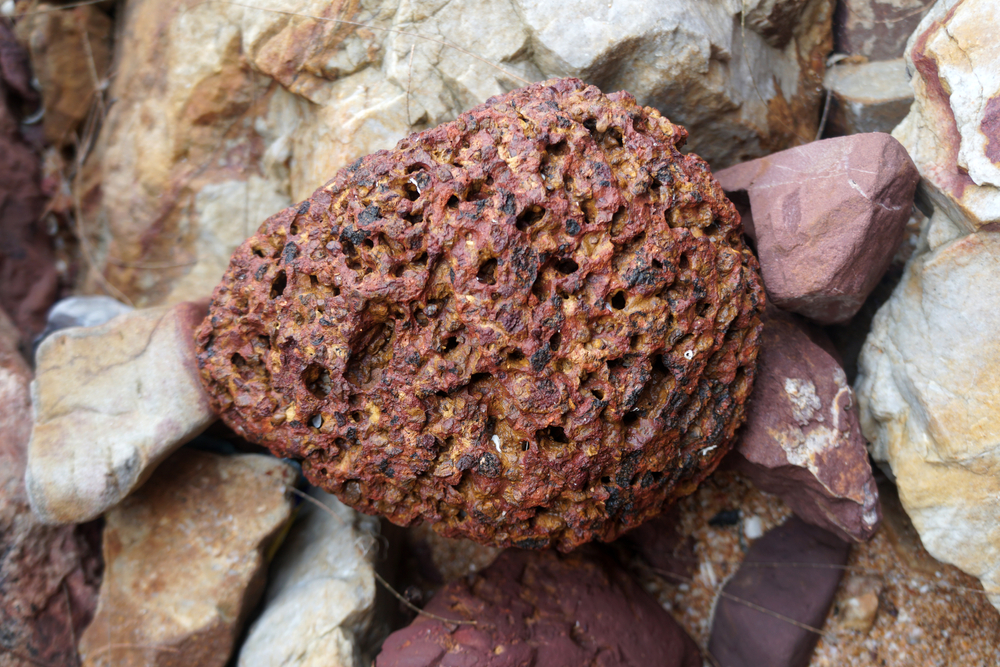
Bog iron is the informal name for a variety of iron ore that is generally roughly shaped and brown in color. As a general rule, it is found in low-Ph, anoxic environments such as peat bogs. The actual composition varies widely, but magnetite and goethite are the most common minerals included. Other iron oxides and hydroxides can also be found in it, such as limonite.
While bog iron has fallen out of use due to the high levels of impurities, it was actually the first material from which our ancestors extracted iron. Using a primitive smelter known as a bloomery, the bog iron was formed into a form known as sponge iron. This was further worked to become wrought iron, a form of iron that has an extremely low carbon content.
Most bog iron hails from Europe, but it’s also been found on the Eastern seaboard in the United States. In particular, smelting operations were set up on the Atlantic Coast of Maryland and in Massachusetts and Maine. While not of commercial interest these days, it can be found by those who want to understand a piece of ancient history.
11. Sinhalite
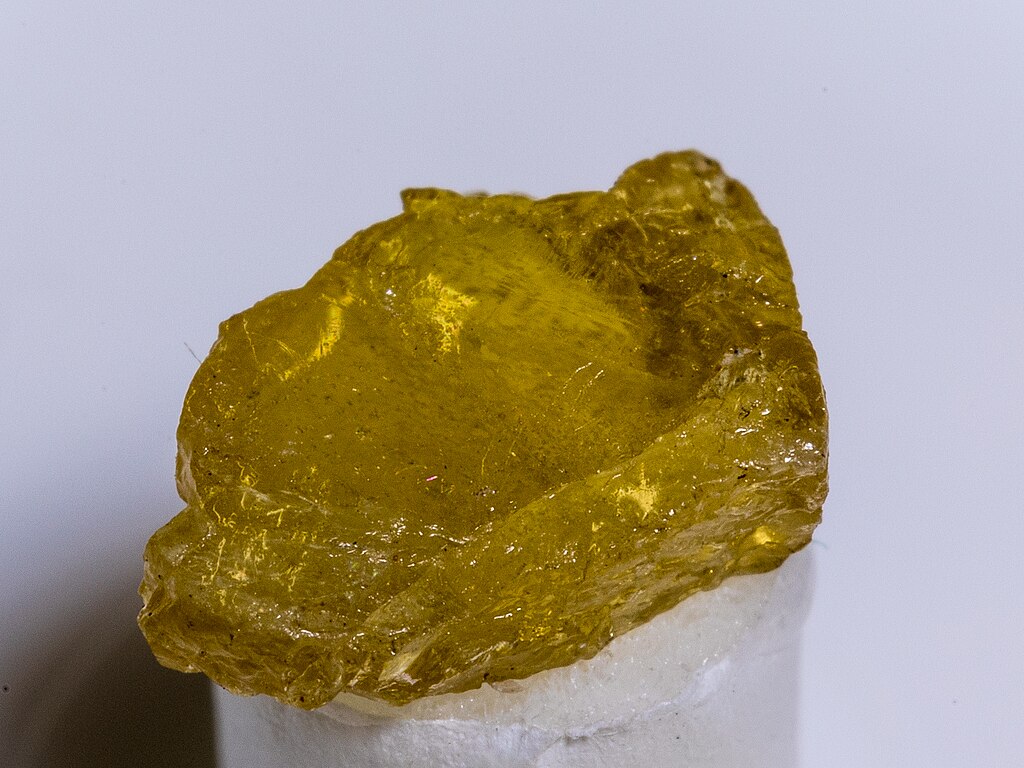
CC BY-SA 4.0)
Sinhalite is a rare, yellow-brown mineral that’s mostly a curiosity. It’s a borate mineral, meaning that it contains boron but it’s not of much industrial use. Instead it’s most often seen as mineral samples, although some of it is gemmy enough to allow for faceted stones to be cut from it. These higher-quality samples are generally more on the yellow side, and it’s hard enough to be a good choice for most jewelry.
Sinhalite is most often found in a massive form. Massive stones consist of interlocking grains of a mineral, leaving the stone itself with little distinguishable crystalline form due to the tight formations. This form is generally brown, and it’s the more common of the two forms by a long shot.
So far, sinhalite has only appeared in Sri Lanka. Smaller stones can be found for relatively cheap prices, but the crystal formations are generally quite small. This leads to larger gemstones being worth exponentially more as they increase in size. It’s still an interesting mineral for those with an interest in gemstones, however, and samples aren’t too hard to find.
12. Sard
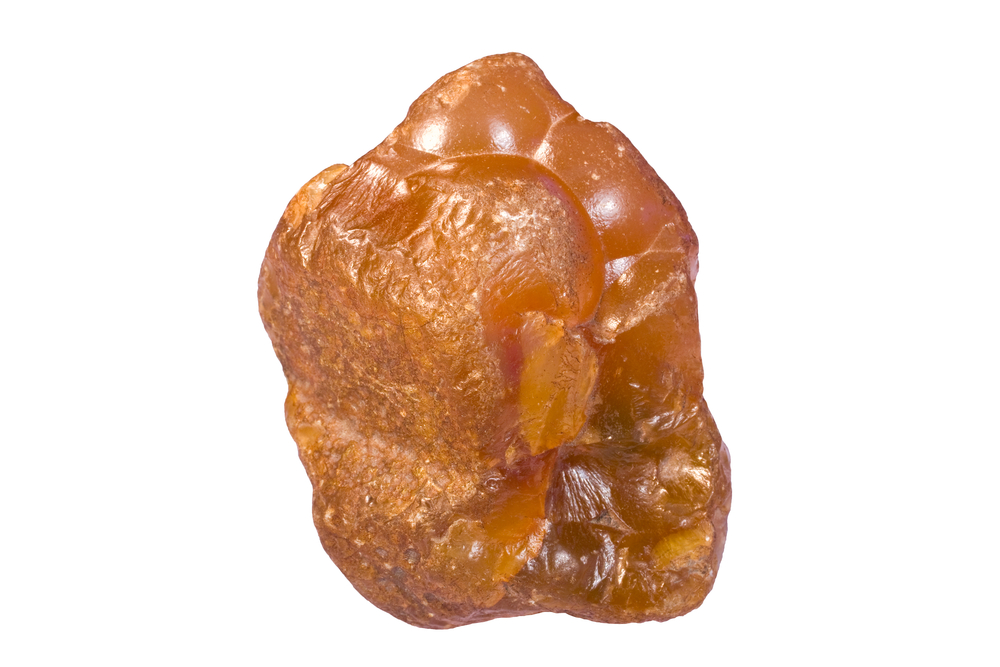
Sard is closely related to the much redder carnelian although it’s hard to draw an exact line. As a general rule, sard tends to be more brown than red and is generally considered to be a lower quality gemstone than Carnelian. Sard is a rather common form of chalcedony, often found alongside its redder cousin as well.
Sard is another form of chalcedony and may display banding just like agates. This form will generally have black and white banding in addition to the brown bands. You’ll often see this form referred to as sardonyx, after the typical white and black banded stones that are generally referred to as onyx.
The majority of sard in the United States can be found in California, with three known locations in Norcal, Central California, and Socal. There is another known locality in New Mexico as well. That said, many types of carnelian can be referred to as sard when they tend towards brown, there’s no distinct point where one becomes the other.
13. Spessartine Garnet

Spessartine garnets, like most varieties of garnets, come in quite a few different colors. The majority of the mineral, however, ranges from orange to brown in coloration. You may also see the crystals referred to as spessartite, but this is a misnomer. Spessartite actually refers to a blend of feldspars and hornblende found in Germany.
Spessartine is high in magnesium, and it’s part of the solid-solution series which includes almandine garnet. They’re often cut as gemstones when found as high-quality crystals, but the majority of the material is translucent, heavily included, and a muddy brown color. They’re commonly seen as mineral samples on the matrix.
Spessartine garnets are quite common wherever garnets are found since garnet varieties are almost always mixed together. In particular, areas with a high concentration of almandine garnets will also have spessartine in varying amounts. For those looking to collect their own, Southern California and the area around Charlotte, South Carolina is your best bet but they’re present to some degree in most of the continental United States.

